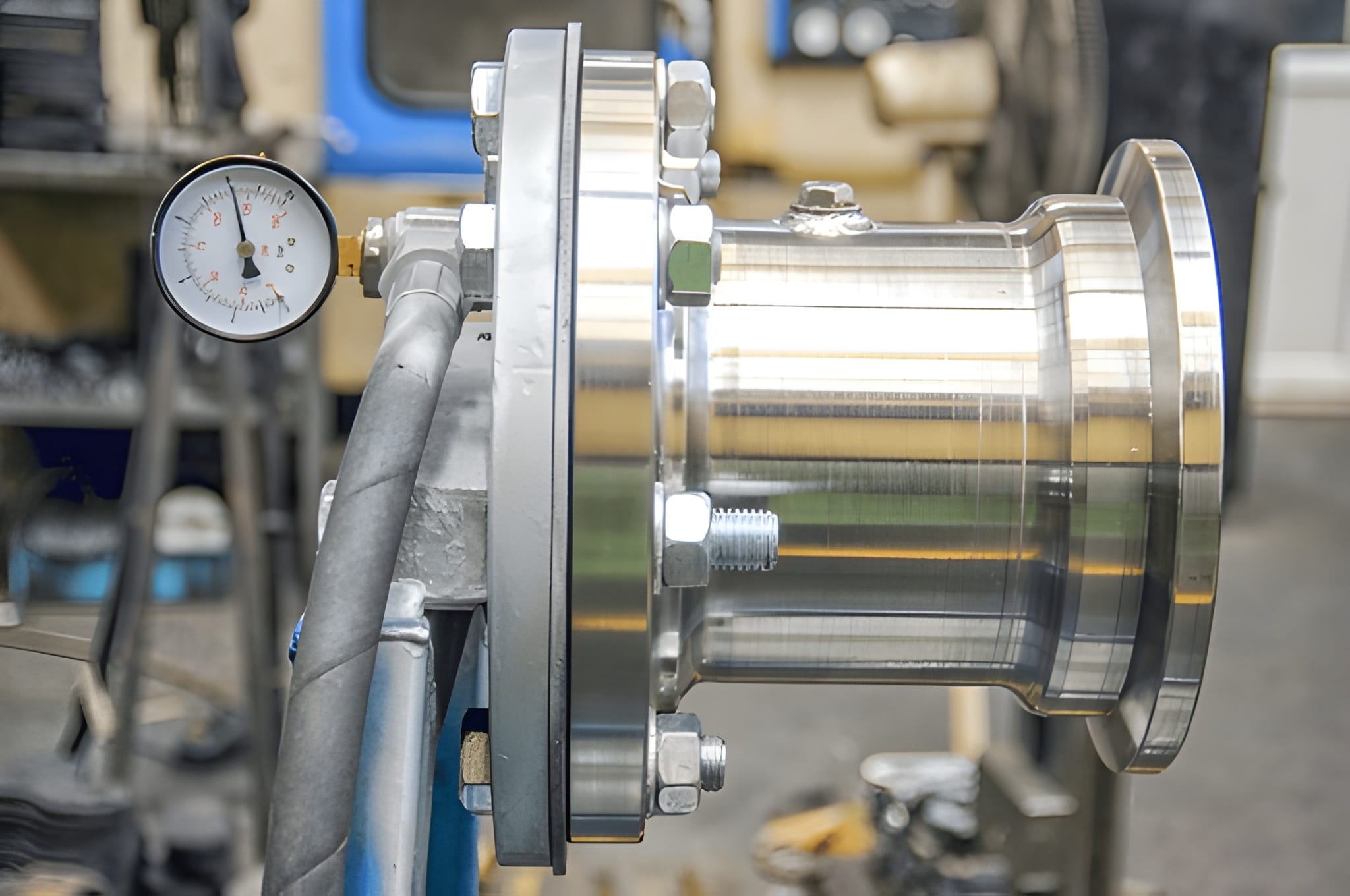The hydrostatic testing process is one of the most reliable ways to check the integrity of a plumbing system. For Texas, this test is especially important. Shifting clay soil, aging infrastructure, and slab foundations put plumbing lines under stress, increasing the risk of hidden leaks. A hydrostatic test helps detect problems early, before they become costly foundation or water damage issues. This affects gas, water and sewer lines.
In Dallas–Fort Worth hydrostatic testing is commonly performed during home inspections, after major plumbing repairs, or when leaks are suspected under a concrete slab. Local experts such as Metroplex Leak and Line Locators provide professional testing and leak detection services that ensure accurate results and peace of mind. Very important when having your foundation leveled.
What is Hydrostatic Testing?
Hydrostatic testing is a pressure test used to determine if plumbing or piping systems are watertight. The plumbing system is filled with water and then pressurized to a set level. If the pressure holds, the pipes are sound. If the pressure drops, it signals a leak, weak joint, or other failure. We can find the problem!
In Texas, homeowners often encounter hydrostatic plumbing testing when:
- Buying or selling a home
- Inspecting a property with foundation repairs
- Dealing with unusually high water bills
- Investigating suspected slab leaks
Because many Texas homes are built on slab foundations, leaks occur under concrete where pipes are hidden. Hydrostatic testing is one of the most effective ways to uncover these issues quickly. We use non-invasive pinpoint leak detection. That means no digging..
Equipment Used in Hydrostatic Testing
Licensed Texas plumbers rely on specialized tools to complete a hydrostatic test safely and accurately. Common equipment includes:
- Pressure gauges: Measure water pressure and identify drops.
- Test plugs: Seal off plumbing sections for isolated testing.
- Water source and hoses: Supply water to fill and pressurize the system.
- Valves and fittings: Manage flow and maintain proper pressure levels.
Professional plumbing companies in Texas like us use digital gauges for precise monitoring. While the tools may look simple, knowing how to operate them correctly requires training.
Step-by-Step Hydrostatic Testing Procedure
Hydrostatic pressure testing follows a precise process to ensure safety and accurate results:
- Preparation
The plumber drains air from the plumbing system and seals specific openings. - Filling with water
The system is filled slowly to eliminate air pockets. Clean water is used. - Pressurizing the system
Water pressure is raised to the required level to reveal weaknesses. - Holding pressure
The system remains under pressure for depending on local building codes and system size to confirm the system is good. - Monitoring for leaks
The plumber checks the gauge for pressure drops and inspects for visible leaks. - Documenting results
Notate results, pressure levels and test duration, for homeowner records or real estate transactions.
This process confirms whether a Texas plumbing system is leak-free or needs immediate attention.
How Long Does Hydrostatic Testing Take in Texas?
For most residential plumbing systems in Texas, a hydrostatic test lasts between 30 minutes and 2 hours. Larger commercial buildings may require testing for longer periods.
Factors that can extend the testing time include:
- Multiple plumbing branches requiring separate testing
- Repairs or adjustments needed before retesting
- Ongoing soil movement that requires extended monitoring
If a test fails, Texas plumbers often use additional tools like video camera inspections or electronic line locators to find the exact source before starting repairs.
Why Texas Homeowners Need Professional Hydrostatic Testing Services
While the process may sound simple, only licensed Texas plumbers should perform hydrostatic testing. Professional plumbers:
- Follow state plumbing codes
- Use calibrated equipment for precise readings
- Provide official test reports for real estate or insurance purposes
- Ensure no damage is caused to your plumbing system
Metroplex Leak Locate has the Texas plumbing pros you want who specialize in hydrostatic testing, slab leak detection, and full-service plumbing solutions for homeowners across the Dallas–Fort Worth area and beyond. Working with a trusted professional ensures both safety and accuracy.
Get ready to call us!
The hydrostatic testing process is one of the most effective ways for Texas homeowners to confirm that their plumbing system is leak-free and ready for long-term use.
By understanding the equipment, procedure, and safety measures, homeowners can see why professional testing is worth the investment. An inspection today could save thousands in a disaster or foundation repairs tomorrow.
If you suspect a leak or need a reliable inspection, schedule a hydrostatic test with Texas Plumbing Pros. Our licensed plumbers provide accurate results, local expertise, and peace of mind. Contact us today to book your service and protect your Texas home.
FAQs
- How much does hydrostatic testing cost in Texas?
Most residential hydrostatic tests in Texas cost between $250 and $600, depending on system size and location. - Is hydrostatic testing safe for my pipes?
Yes. When performed by licensed professionals, the process follows strict safety limits and will not damage your plumbing system. - How often should hydrostatic testing be scheduled?
At least once every few years or whenever you suspect a leak. Homes with foundation movement should be inspected. - What happens if my home fails a hydrostatic test?
A failing result means there is a leak. A plumber will then use advanced tools such as camera inspections or line locators to find the issue and recommend repairs. - Can I perform hydrostatic testing myself?
No. The test requires specialized equipment and training. For safety and accuracy, always hire a licensed Texas plumber.


